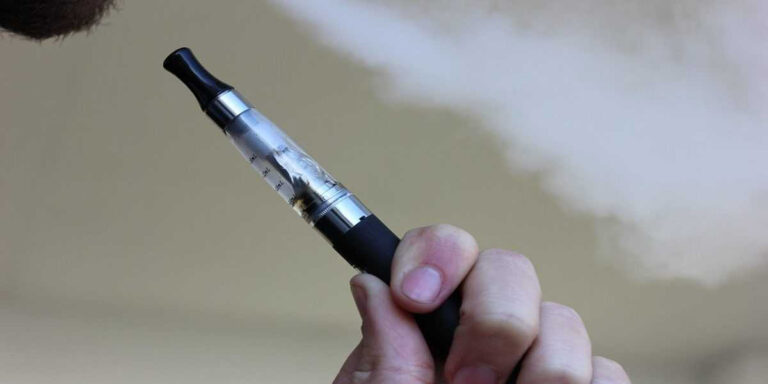Getting Familiar with the Tobacco Products Directive (TPD)
The Tobacco Products Directive (TPD) is the European Union’s legal toolkit for regulating everything from traditional tobacco to the newer nicotine alternatives. Since 2014, the TPD has shaped the rules for things like cigarettes and e-cigarettes, and more recently, heated tobacco products. With the market evolving and more nicotine products popping up, it’s clear that the rules need a bit of an update. That’s where TPD3 comes in.
Back in 2021, the European Commission started working on the third revision of the TPD. However, the process has hit a few snags, raising questions about where tobacco regulation is headed in the EU.
What’s Happening with TPD3? A Quick Rundown
The journey to TPD3 hasn’t been smooth. Despite high hopes for quick action, things have slowed down. Jan Muecke, General Manager of the German Tobacco Industry and New Products Association, points to an investigation by the EU Ombudsman as a key reason for the delay. This investigation involves the European Network for Smoking and Tobacco Prevention (ENSP), a group tasked with helping assess future regulations. However, some, like Muecke, wonder if the ENSP is too biased to be objective about the future of tobacco rules.
Key Dates to Watch
- Evaluation Delays: The review process should be wrapping up, but it’s been pushed back. Muecke is hoping things will get back on track after the European Parliament elections in late 2024.
- Impact Assessment & Draft: By 2025, we’re likely to see an impact assessment, with a formal draft by the end of that year.
- New Regulations: The updated rules could roll out across EU countries by 2027 or 2028.
What’s Got People Talking About TPD3?
As talks around TPD3 continue, both industry insiders and public health advocates are focusing on several key areas where the new rules might change things.
New Products, New Rules?
While e-cigarettes and heated tobacco products are already regulated under the TPD, newer products like nicotine pouches aren’t fully addressed. Right now, these pouches are allowed in 16 EU countries, and they pose a challenge for regulators.
Will TPD3 bring them under stricter regulation? Some are worried it might, especially if nicotine pouches end up facing the same fate as snus, a smokeless tobacco product banned throughout the EU except in Sweden. If the ban extends to nicotine pouches, the industry could be in for a shock.
The Debate Over Tobacco Harm Reduction (THR)
A major point of contention is whether tobacco harm reduction (THR) will play a role in TPD3. Proponents of THR argue that encouraging smokers to switch to lower-risk alternatives—like e-cigarettes or heated tobacco—could be a game-changer for public health. By offering less harmful options, we might see fewer smoking-related illnesses.
However, not everyone is on board with this idea. Critics, including some within the European Commission, still view these products as part of the problem. There’s a chance TPD3 could introduce stricter rules for reduced-risk products, potentially ignoring the positive impact they could have on smokers trying to quit.
Flavors: Will They Stay or Go?
Flavors have long been a hot topic. A number of EU countries have already banned or limited certain flavors in e-cigarettes and nicotine pouches, worried that they appeal too much to younger consumers. Countries like Denmark and Latvia are at the forefront of pushing for even more flavor restrictions.
While TPD2 allows countries to set their own flavor rules, there’s concern that TPD3 could impose an EU-wide flavor ban. For those using flavored products as a way to quit traditional cigarettes, this could cut off an important tool in their harm-reduction arsenal.
Environmental Impact: What About Disposable E-Cigs?
While TPD3 isn’t necessarily targeting disposable e-cigarettes, the upcoming EU Battery Directive could affect them. The directive aims to tackle the environmental impact of disposable products, particularly the batteries inside these e-cigs.
As manufacturers shift to rechargeable devices, consumers might find fewer easy-to-use options on the market. For smokers trying to quit, this could make finding a simple, beginner-friendly product that much harder.
Standardization: One-Size-Fits-All?
Another worry is that TPD3 could push for standardized regulations across the EU that don’t account for the diversity of products. Nicotine products are constantly evolving, and there’s concern that overly rigid rules could stifle innovation.
Muecke has voiced concerns that the EU’s drive for uniformity might overlook the unique aspects of various products. A one-size-fits-all approach could limit consumer choice and slow down the development of safer alternatives to smoking.
Finding a Middle Ground in Tobacco Regulation
The overall goal of the TPD is to improve public health by reducing smoking. But so far, progress has been slow. According to the Eurobarometer survey, the number of smokers in the EU has only dropped by 1% between 2020 and 2023, with 24% of adults still smoking. Since the first TPD was introduced in 2016, smoking rates have only decreased by 3%, far from what’s needed to meet the EU’s smoke-free goals.
At this rate, advocacy group Clearing the Air estimates it will take the EU another 70 years to become smoke-free. This sluggish pace is pushing some in the industry and public health sectors to call for a more balanced approach in TPD3, one that acknowledges the potential benefits of harm reduction products.
Political Influences
The European People’s Party (EPP), which gained more seats in the 2024 EU elections, could play a key role in how TPD3 shapes up. Will their influence steer the directive toward more progressive harm-reduction policies? That remains to be seen.
Final Thoughts: A Pivotal Moment for Tobacco Regulation
As the TPD3 revision inches forward, the future of tobacco and nicotine regulation in the EU is still uncertain. While everyone agrees that reducing smoking is a priority, there’s less consensus on how best to do it.
TPD3 could represent a crucial turning point. Whether the final rules lean toward stricter control or embrace a more flexible, harm-reduction-friendly stance will depend on how the next few years of discussions unfold.
FAQs
What is the Tobacco Products Directive (TPD)?
The TPD is the EU’s legal framework for regulating tobacco and nicotine products, from cigarettes to e-cigarettes.
What’s TPD3?
It’s the upcoming third revision of the Tobacco Products Directive, aimed at updating the rules to better address modern products.
When will TPD3 take effect?
New regulations are expected around 2027 or 2028.
Will nicotine pouches be banned?
We don’t know yet, but it’s possible TPD3 could introduce stricter rules for nicotine pouches.
What’s tobacco harm reduction (THR)?
THR encourages smokers to switch to less harmful products, like e-cigarettes or heated tobacco, to minimize health risks.
Will TPD3 ban flavors?
It’s uncertain, but some countries have already banned certain flavors, and TPD3 could expand this to the entire EU.


















